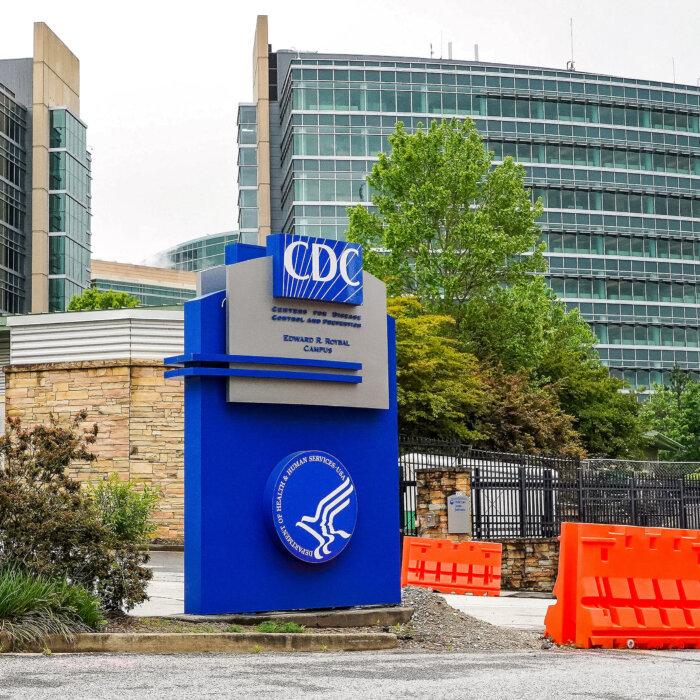As newly emerging cases of measles have been reported in the United States, and Europe is also facing an outbreak, health authorities worldwide are calling for vaccination, drawing attention to this old but still unresolved contagious disease.
However, when measles swept the world in the previous century, it was not a vaccine that saved millions of lives.
An Old, Severe Illness
Almost all children contracted measles in the first half of the 20th century.Young children have been the most affected, as seen in 1906, when 85 percent of
reported deaths were children under age 5. From 1912 to 1922, an average of
6,000 measles-related deaths in the United States were reported each year.
Although measles was declared eradicated in
the United States in 2000, new cases have emerged during the past decades. The U.S. Centers for Disease Control and Prevention documented
1,274 cases in 31 states in 2019, reaching a peak in cases during the past decade.
Despite massive global vaccination in the current era, in 2015 alone, the World Health Organization (WHO) reported about 134,200 deaths attributed to measles.
Similar to SARS-CoV-2
In the
ninth century, the Persian physician Abū Bakr Muhammad Zakariyyā Rāzī (Rhazes) documented measles. In 1757, Scottish doctor Francis Home determined that measles was caused by an infectious agent, a significant advancement in understanding the disease.
(Left) Measles disease, giant multinucleated cells seen during microscopy of biopsy specimens, known as Warthin-Finkeldey giant cells. (Kateryna Kon/Shutterstock); (Right) Measles rash. phichet chaiyabin/Shutterstock
Both are highly contagious viruses. The measles virus can cause 14 to 18 secondary cases among susceptible populations, spreading through airborne droplets or direct contact between individuals. It’s most contagious four days before and four days after the rash onset, which allows the virus to spread faster when people are unaware.
Measles features a
distinctive rash that typically begins on the face and extends downward, covering the neck, trunk, arms, legs, and feet. As the rash progresses, flat red spots may merge, and individuals often simultaneously experience a high fever.
It can cause
serious complications, including infections in the lungs and nervous system, resulting in the hospitalization of 1 in 5 patients. Some experience brain damage.
Once successfully recovered from a natural measles infection, most people develop lifelong immunity.
Measles Decline Not Due to Vaccine
The 1967 global vaccination campaign was supposed to eradicate measles, but it did not happen. In 1978, the United States set a goal to eliminate measles by 1982, but that also did not occur.However, skepticism exists about the vaccine’s role in eradicating the disease.
First, the claim of nearly 100 percent efficacy relies solely on the antibodies induced by the vaccines and may not accurately reflect the clinical protection rate. An accurate calculation of an absolute infection rate requires a randomized, placebo-controlled study.
Furthermore, historical records indicate that measles incidence and mortality rates were already declining before the widespread use of the vaccine.
The following chart shows the death rate for measles in the United States from 1900 to 1987. Before the introduction of the measles vaccine in 1963, the death rate had declined from its peak by
a massive 98.7 percent.
The U.S. measles death rate had significantly declined before vaccination was mandated. The Epoch Times
The following chart shows the death rate from measles in England.
The English started recording mortality statistics in 1838, much earlier than the United States. Measles deaths plummeted in the late 1800s, nearly reaching zero by the 1950s. In 1968, England began vaccinating for measles, which was five years later than the United States. By that point, the death rate had declined from its peak by a massive 99.8 percent.
Even without a vaccine, by 1960, the reported cases of childhood measles in England and Wales
were only 2.4 percent, and the mortality rate had dropped to 0.03 percent.
The UK measles death rate had declined before the vaccination was mandated. The Epoch Times
Despite measles vaccine coverage as high as 88 percent in Zimbabwe, measles outbreaks
remained consistent. During the outbreaks from 1967 to 1989, increased measles vaccine coverage not only
failed to decrease the case fatality rate but also appeared to be linked to
a higher incidence of measles.
During the Zimbabwe outbreaks from 1967 to 1989, increased measles vaccine coverage not only failed to decrease the case fatality rate but appeared to be linked to a higher incidence of measles. The Epoch Times
What were the main factors that drove the dramatic decline of measles before vaccination began?
Nutrition Matters
Between 1867 and 1872, in the Paris orphanage Hospice des Enfants Assistes, almost half (49 percent) of the children with measles died, according to a
retrospective review. However, the death rate of measles in England and Wales in 1960 had declined to about 0.1 percent in children.
(Center) Malnutrition is a major contributing factor in children dying from measles. A 4-month-old baby suffering from severe malnutrition lies in a hospital bed on July 16, 2002, in Kabul, Afghanistan. (Natalie Behring-Chisholm/Getty Images); (Right) Somali mothers and children waiting for food from UNICEF feeding center in Wajid, a town in southern Somalia, April 13, 2000. Somalia has one of the highest infant and child mortality rates in the world for many diseases, including measles. ALI MUSA/AFP/Getty Images
Globally, children’s nutrition and hygiene significantly improved in the 20th century, along with greater access to health care and drugs, resulting in a
90 percent decrease in infant mortality since 1900.
The significant role of nutritional factors in measles infections and deaths has been described in many scientific studies.
Based on the measles outbreaks in Zimbabwe from 1967 to 1989, researchers found that the declining measles case-fatality rates were
associated with declining malnutrition among children under age 5. In other words, malnutrition was a strong and independent predictor of measles case fatality rates.
Nutrition improvement contributes to the death decline of measles. The Epoch Times
Malnutrition was associated with a
24.9 times risk of developing measles with fever and skin rash during an outbreak in Yemen from February to May 2018.
Similar associations were found between an
increased risk of measles infection and being underweight in a study of Namibian children under 5 years of age from 2005 to 2014.
The lack of one particular vitamin has had a major effect.
Vitamin A Saves Lives
Vitamin A is essential and plays a vital role in preventing measles infection and reducing mortality.A 2011 systematic review and meta-analysis based on 43 randomized controlled trials, including 215,633 children, conducted between 1976 and 2010, found that vitamin A supplementation was associated with a
50 percent reduction in measles.
A 2021 Indian study reported that during a 2018 measles outbreak, children who were unvaccinated but received preventive vitamin A supplementation had a
77 percent reduced risk of contracting measles.
As early as 1932, a London study of 600 hospitalized children under 5 years of age with measles were equally assigned to receive either routine measles therapy or routine therapy plus one ounce of cod-liver oil rich in vitamins A and D.
Those with nutritional supplement therapy experienced a significant reduction in mortality—
from 8.7 percent to 3.7 percent. This effect was particularly pronounced in those under 2 years of age.
1932 London Study: Cod-liver oil rich in Vitamin A and D reduces mortality of measles The Epoch Times
A
1987 Tanzanian study recruited 180 children with measles, 90 percent of whom were deficient in vitamin A. The relative risk of mortality was significantly reduced among those given vitamin A versus those given only routine treatment (7 percent versus 13 percent).
The difference was more pronounced in children under age 2 and in cases with croup or laryngotracheobronchitis.
Similarly, a
2005 Cochrane review revealed that vitamin A reduced mortality by 79 percent in children under 2 years of age. The review also found a decrease in croup incidence with two doses. No adverse effects were reported.
Furthermore, a more robust reduction of death in those with complicated measles was reported.
In a randomized, placebo-controlled, double-blind study, vitamin A given to 60 hospitalized young African children with complicated measles resulted in a
reduction of deaths at day eight, at six weeks, and at six months by 82 percent, 61 percent, and 85 percent, respectively.
The significant decline in the common complications, as evaluated by the morbidity score after vitamin A treatment, contributed to the substantially reduced mortality.
1991 African Study: Vitamin A reduces complications of measles The Epoch Times
Vitamin A Reduces Measles Severity
A 1990
South African study published in the New England Journal of Medicine studied 189 children with subclinical vitamin A deficiency in Cape Town who were hospitalized with severe measles complications.
Those given vitamin A recovered more quickly from pneumonia and diarrhea, had fewer cases of croup, and spent fewer days in the hospital than the placebo group. The vitamin A-treated group had half the risk of death or major complications compared with the control group.
The vitamin A-supplemented group in the previous African study also exhibited
substantial decreases in diarrhea, herpes, and respiratory tract infections, and weight gain was significant at six weeks.
A pivotal study by Clive E. West, published in Nutrition Reviews (February 2000), highlights the
critical role of vitamin A in reducing the severity of measles.
Mr. West’s research indicates that vitamin A supplementation significantly lowers the risk of severe complications and death from measles, particularly in undernourished populations.
The conclusion challenges the sole reliance on vaccination and underscores the importance of nutritional strategies in managing measles outbreaks.
Vaccines Revisited
More from this series
Officially Recognized
The scientific studies cited above conclude that vitamin A treatment contributes to the reduction of measles incidence, morbidity, and mortality, which reaches the ideal goal of a “vaccine.”The complete picture is complex because of the interplay between measles and vitamin A; measles infection increases the risk for
vitamin A deficiency.
Accordingly, in developing countries, the WHO and UNICEF (the United Nations Children’s Fund) recommend that children with measles be given vitamin A regardless of whether they are deficient.
The recommended dose of vitamin A by the WHO and given in the above studies was usually no more than 400,000 IU in total given for two consecutive days, within five days of the onset of the rash.
According to the
WHO website, the effect of vitamin A in treating measles is fully recognized.
It also states, “In settings where vitamin A deficiency is a public health problem, vitamin A supplementation is recommended in infants and children 6–59 months of age as a public health intervention to reduce child morbidity and mortality (strong recommendation).”
Children in the United States could have a vitamin A deficiency even though it’s not considered “a public health problem.”
The WHO states, “There is a well-established scientific basis for the treatment of measles cases with vitamin A supplementation that is recommended by WHO as part of the integrated management of childhood illness.”
An official report
published in 2016 by UNICEF shares the same view. Their website states: “Vitamin A supplements have the power to save a child’s life. ... Vitamin A supplementation helps maintain strong immune systems. It reduces the incidence of diarrhea and measles in children and prevents blindness and hearing loss. Most importantly, vitamin A supplements can improve a child’s chance of survival by 12 to 24 percent.”
Indeed, it appears that the WHO and UNICEF have expanded the indications for the use of vitamin A to “all cases of severe measles,” not just children from populations where vitamin A deficiency is known to exist in priority countries.
Provides Front-line Immunity
The most cunning part of the measles virus is that it
destroys the epithelial layer, which is the front line of our innate defense system; vitamin A repairs this layer.
Epithelial tissue is a thin protective layer of flat cells found in various organs and blood vessels throughout the body, including the lungs, gut, eyes, kidneys, and bladder. Our natural immunity starts at the epithelial surface, where the mucosal cells fight against invading pathogens.
Vitamin A plays an essential role in maintaining the normal epithelial tissues. It is crucial to the integrity of the mucosal cell layer, its protective mucous covering, and its ability to shield us from viruses.
If keratin is deposited in the epithelial cells on the surface of our body, it makes them impermeable and dry, potentially leading to a
loss of function and disease.
Furthermore, vitamin A deficiency also
depresses the function of immune cells to fight against viruses, adversely affecting immunity.
The measles virus also
damages the immune cells, inducing
transient immune suppression. As a whole, the interplay between measles and vitamin A deficiency is leading to even greater susceptibility to infections.
Vitamin A Limitations
Although maintaining an adequate level of vitamin A is essential, long-term excessive use or taking too much at one time
can be harmful.
Even a single, large dose of more than 200,000 micrograms (mcg) can cause the following
side effects:
- Nausea
- Vomiting
- Vertigo
- Blurry vision
A vitamin A
conversion calculator says to multiply the IU amount by .3 to convert to mcg. Using this conversion method, 200,000 IU is equivalent to 60,000 mcg.
Vitamin A can be effective for measles, but it is not a miracle for everyone. Essential nutrition still matters.
A
1994 Indian study reported a significant decline in mortality in the group with vitamin A supplementation compared with the control (16 percent versus 32 percent), in children with severe malnutrition or encephalopathy, but the recommended dose of vitamin A did not help.
A natural and safer way to get vitamin A is through
beta carotene from foods or supplements. Our body converts this compound to as much vitamin A as needed without having to worry about toxicity.
The
daily amount of vitamin A recommended to prevent a deficiency for people older than 14 is 900 mcg per day for a male and 700 mcg for a female. The dose for women during pregnancy or lactation is 750 to 770 mcg or 1,200 to 1,300 mcg per day, respectively. The daily amount recommended for younger children ranges from 300 to 600 mcg, depending on age and gender.
Recommended dietary allowance for Vitamin A The Epoch Times
A Gift From Nature
Historical evidence suggests that the measles vaccine is not the prominent hero we’ve been told it is for preventing measles. Enhancing our natural immunity is a more effective strategy for controlling measles infection, mortality, and morbidity.Despite the emphasis on vaccination by health authorities, it’s crucial to recognize the power of bolstering our natural defenses in a holistic and resourceful manner, a lesson also highlighted during the COVID-19 pandemic when early therapeutics and natural interventions were ignored and even ridiculed.
A vaccine is not a miraculous cure. A holistic and balanced approach that boosts natural immunity is crucial for disease management and prevention.
Given the compelling evidence of vitamin A’s benefits in measles prevention and treatment, it’s imperative to integrate these insights into public health policies, especially during outbreaks.
We will discuss the safety of measles vaccines.
Views expressed in this article are the opinions of the author and do not necessarily reflect the views of The Epoch Times. Epoch Health welcomes professional discussion and friendly debate. To submit an opinion piece, please follow these guidelines and submit through our form here. 



























